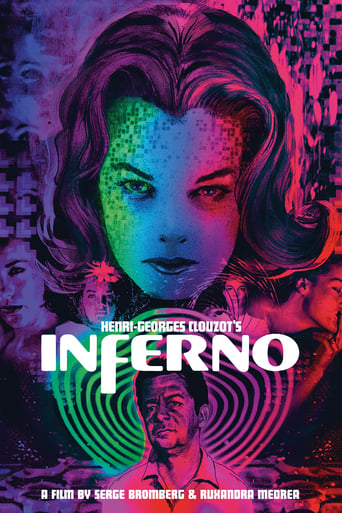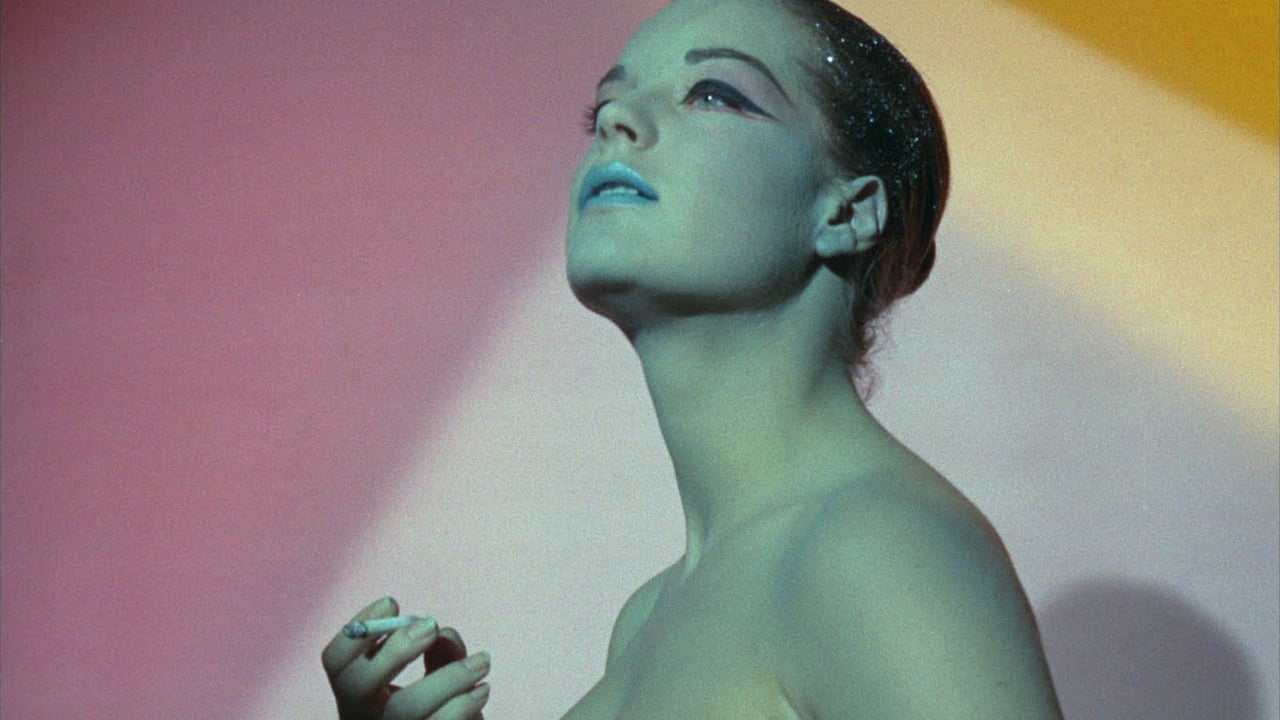dbdumonteil
This is not legend ,this is fact:HG Clouzot was one of the most important French directors of all time .He is the sole Frenchie who enjoys two movies in the IMDb top 250 and that means something for someone who worked before (and a bit) beyond the N.V.The New Wave was one of the reason why HG Clouzot tackled a work which finally almost killed him.He was trashed by the Young Turks and he wanted to prove them that he too was able to produce creative innovative movies.Actually he had nothing to prove for,although he made only eleven movies and a half ,all of those movies (but one :"Miquette Et Sa Mère" ) were stunning achievements ."Manon" ,for instance,was anything but conventional or academic,transferring a novel from the eighteenth century to the Liberation in 1944."Les Espions" was so ahead of its time nobody in France understood it when it was released .His overlooked short from "Retour A La Vie" predated such works as "death and the maiden" by forty years .And I do not even mention his well-known -and sometimes more praised abroad than in his native country- "Corbeau" "Diaboliques "and "Salaire De La Peur" ,all classics everywhere.The Nouvelle Vague could do nothing but put this genius down ;he represented all that they hated : elaborate screenplays,tyrannical actors direction(Serge Reggiani ,who,however ,had worked with "La Clouze" in "Manon" (1949)called it a day after some exhausting weeks and was replaced by Trintignant who reportedly did not do anything), skillful treatment of pictures :like Hitchcock ,he intensively used storyboards (with incredible results:"Reggiani under the bridge" has something downright disturbing) "L'Enfer" ,which was to be the follow-up to "la Vérité" ,was intended as something new ,at least in its form ,for as a voice over tells us ,the story is trite :jealousy is a hackneyed subject which had been treated many times ,notably brilliantly by Luis Bunuel ("El").Reality would be filmed in austere black and white -all Clouzot's movies but two are in B&W- whereas phantasms would be given the color treatment ;although the story was filmed on location in Auvergne ,the pictures were to be re-worked in the studio .And some of them are particularly impressive .Romy Schneider was perhaps never filmed as she was in this movie,in scenes which were risqué for 1963 :tied naked to the rails while a train is a coming,fooling around (in her husband's mind) with all the men around and even her best friend (Dany Carrel) -homosexuality was not a new subject for HGC :there was a lesbian in "Quai Des Orfèvres" (1947)."L'Enfer" became really "L'Enfer" .HGC 's ambitions were finally too much for him (and his actors;HGC was not a nice director to be directed by:in her memoirs "La Nostalgie N'Est Plus Ce Qu'Elle Etait " ,Simone Signoret wrote "I had a rough time of it " about "Les Diaboliques" ) and he gave up.Some of the innovations were used in the follow-up "La Prisonnière " (which was his final work in 1968) particularly in the scenes in Laurent Terzieff's apartment and in Elisabeth Wiener's psychedelic visions (not unlike those of Keir Dullea in "2001").It was 1994 before Claude Chabrol made a movie based on HGC's screenplay.Of course his work was not what Clouzot intended to do (how could it?)but it was faithful to its spirit and generally looked upon as one of Chabrol's finest achievements.Like this? try this....."Carnet De Naufrage" ,a documentary depicting the movie "La Fleur De L'Age "(1947).Marcel Carné was never able to see it through.Intended to be the follow up to "Les Portes De La Nuit" ,it was never finished and put an end to the Carné/Prévert collaboration.
tedg
Presuming that you have not yet seen it, here is a description.Henri-Georges was a remarkable filmmaker. Though contemporary with those normally tagged new wave, he was interested not in ideas but the effectiveness of cinema. His special talent was internal perturbations of reality. After a long period of silence, he embarked on his most ambitious project: a film about a jealous man, showing his torture through practically achieved cinematic effects.He got a huge budget from Hollywood and lavished it on the film, not on sets, costumes, actors. Much was shot, and then the thing unraveled, largely because of the filmmaker's own obsessions. Production halted.Later, in 2009, this film was made about the making of the previous one, weaving the movie and the making of the movie together. The format is superficially simple: we have seated interviews with people who were involved, while relevant footage runs behind them. We see much of that footage without the original sound, though some slight, small effects have been added. Most of the footage are strange optical experiments. Some is the action in "reality." We also, separately, have two contemporary actors reading the lines from the shooting script so at least we know the story such as it is.The result is remarkable. As collaborators, one after the other, testify to the growing madness of Clouzot, or apparent madness. Or perhaps genius. It is effective as a documentary, perhaps unique in its form. It merges fiction and non-fiction, story on story, folded so that it matters. The main actor walks off, the filmmaker has a heart attack, the lake on which filming occurs literally disappears. Trains come. Anxieties mount as loves and the obsession to create clash. We wonder about projects started but unseen from Welles, Hopper, Kurosawa. Like unimagined dreams we might reach, they perhaps have more power without us encountering them. Frankly, I never heard of this failed project before. I am grateful to have encountered it now, in this way.Unfortunately, you may find the optical effects strange, dated. They all are "real" in the sense of being generated according to physical laws and properties. These days, we normally denote the unreal by effects done virtually and supposedly unconstrained by reality. So the shock is reverse: the film we are examining (in black and white) is the fiction, while the madness within that film (in color) is real."You have to see the madness through," is the last line of this. Clouzot could not. Let's hope you, dear reader, do.Ted's Evaluation -- 3 of 3: Worth watching.
serge-33
Okay, this is an insiders' movie for the die-hards, but it works for everyone.The director presumably got the idea when he got stuck with Clouzot's widow in an elevator - he even thanks the elevator for its technical failure in the credits.What do we learn? Overall, we learn about flawed genius, about how unlimited budgets can send a brilliant director off-track. we learn about how far actors will go to satisfy their director's requirements.What do we see? First, being born in 1964, the year the movie was filmed, I loved the stilted, post-industrial surroundings at the lake and the hotel were the film was supposed to be set. I loved the costumes, the modernity and became totally nostalgic (to going back to being a baby, I suppose). Romy... Does it add anything we haven't seen from her? Perhaps not, but it sure is nice and especially to see her with Serge Reggiani who only makes her beauty shine more.Does it work as a documentary? Yes, very well, in my humble opinion. The director does not ask (irrelevant) questions, but he simply presents the material and gives us an insight that perhaps, there was more than Clouzot's seizure to halt filming. He uses beautiful background music to make-up for the missing soundtrack. The dialogues read by two really good actors: well, perhaps it was a bit contrite, but I was thinking all the time that one of the things that would have been quite mediocre had the film been completed, would have been that: the dialogues were flat, boring and superficial (but the actors read them well).My friend asked me: how many movies are there about a movie. Lots, but yesterday evening I could not think of one. But this is more, this is a documentary about a movie about failing to make a movie.Highly recommended.
christopher-underwood
A most interesting film surrounding the making of Clouzot's unfinished, Inferno. Abandoned in 1964 ostensibly due to the director's heart attack, a substantial amount of filming remains and much use has been made of the original footage. Intended as a film about a husband's obsessive jealousy over his wife's apparent philandering, it seems Clouzot became himself obsessed. The b/w footage appears to have some promise but is without soundtrack so hard to judge, but no the real interest here is the experimental reels. Determined to make a film like no other, Clouzot recruited any number of technicians and artists to help create devices to give him surreal or psychedelic affects. Along the way the director has clearly fallen for the lovely Romy Schneider who for instance spent four days with a camera close up on her lips whilst exhaling cigarette smoke and wearing various colours of lipstick, including blue. Valuable as an insight into the attempted making of Inferno but a little frustrating in that it asks more questions than it answers, like the true mental state of the director and why nobody else might have carried on. It is possible that a lot was left out here because Clouzot's widow was to have last say on the film but it would be nice to know and maybe someone else one day will have another go, there seems enough footage.


 AD
AD



